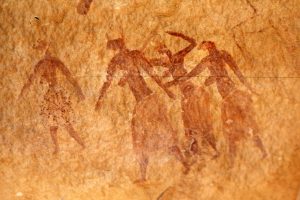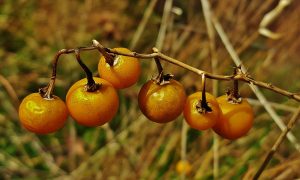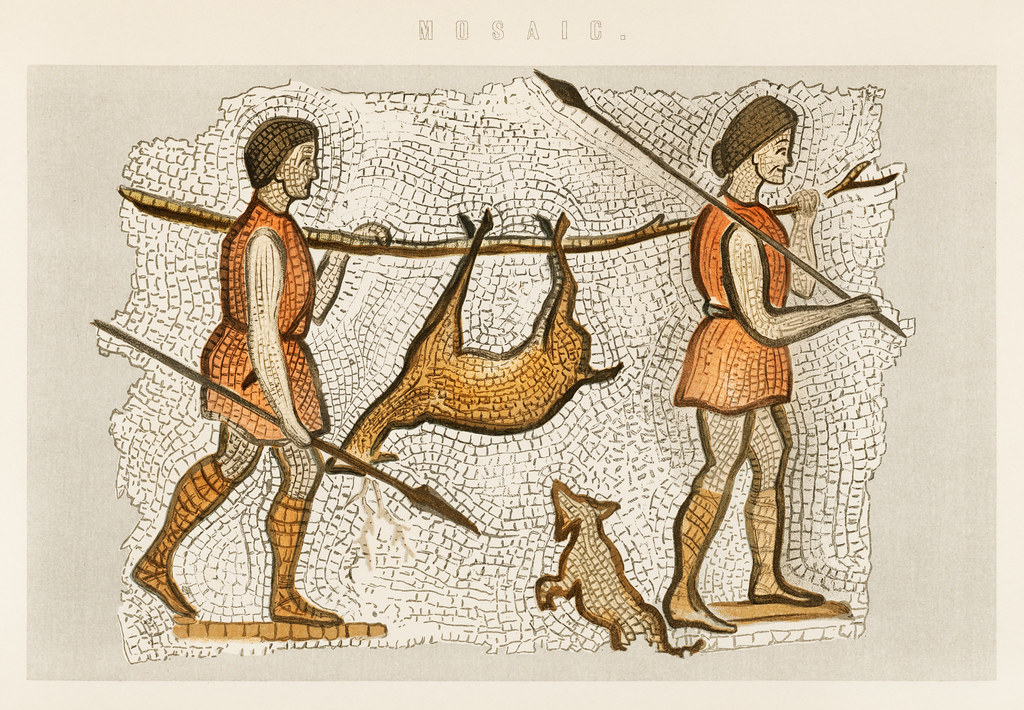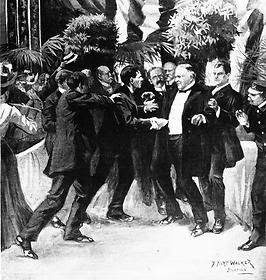In the late paleolithic era, men and women chose their respective social roles as hunters and gatherers, but scholars today are not agreed on why they did so, or even whether the “men-as-hunters hypothesis” is even accurate. Why did men tend to be hunters and women gatherers? Did they choose these roles due to men just being stronger and women less so? These roles most likely stem from a variety of different complex evolutionary changes over the millennia that have enabled men and women to adopt these roles, making it easier for them to decide what was the most obvious and efficient uses of their abilities. There are many possible explanations for what their role selection was. Research done by Randall Haas has found burials of female hunters with their weapons for hunting, suggesting that the “man-the-hunter” thesis may oversimplify who fit what social roles among hunters and gatherers.1 Some scholars address this question of gendering roles among the hunters and gatherers through a gender-biased perception of the world. Margaret W. Conkey and Janet D. Spector believe that the main reason for the “man-the-hunter hypothesis” was archaeologists wanting to believe in the gender separate roles due to their own patriarchal assumptions projected onto the objects of their research, namely hunter and gatherer societies.2 While both views offer us a glimpse into this complex historical debate, I argue that their claims forget important biological explanations for the choice of social roles within hunter-gatherer societies. Rather than being homogeneous and vague, my argument below details why men could have preferred being a hunter, and women preferred being gatherers.

Hunters and gatherers have always been gender stereotyped with the hunters being men by virtue of their strength, and the gatherers being women by virtue of them being child caretakers. This perception of men being naturally stronger has faced challenges in recent times, leading the general public to wonder about men and women having biological differences regarding muscle growth and strength. Let us start with what we do know from biological experiments, the actual difference in strength in gender. A study made by Trevino et al. gathered 20 people, 10 men and 10 women, in order to study their motor unit activation potential when doing isometric exercises with the trapezoid muscle. These exercises included a torque at a 40% maximal voluntary contraction of the muscles. As the experiment went on and each of the participants did their exercises, electromyographic techniques were used to measure the motor unit action potential units (MUAP’s) in terms of AMPS and in relation to the recruitment threshold of them respectively. This is a very technical way of saying that they measured how much muscle was recruited during an isometric exercise. The results of the test stated that men had a higher MUAP vs RT slope than women did on average, with men having a 0.82±0.09 and women a 0.77±0.07.3
In the previous experiment, a general approach was taken in order to review overall muscle recruitment and density. Besides muscle recruitment and efficiency of use, there is also a measurable distinction of lean tissue between both men and women. While both genders are very similar in levels of physical fitness, men possess a higher level of lean tissue. On average, men have a higher lean body mass of 56.4±1.6kg, and women have 40.1±1.3kg. However, an interesting find of this study is how their physical strength correlates, since both men and women in this study live a similar lifestyle. Their knee extension strength was fairly similar, and this may be due to the fact that men have a higher strength potential and muscle activation.4 From this data, you can tell that men and women have very similar physical fitness and can even have the same or similar strength levels, if their lives are similar enough. However, men can have a much higher motor unit recruitment and especially a much higher lean tissue muscle weight. This would’ve been a huge advantage for men in hunter-gatherer societies, as men needed a higher index of strength in order to actually thrust a spear into a beast, not to mention being able to carry the kill all the way back home. Not only did men have to be strong, but they had to be accurate as well. According to a study referenced by Chrisler conducted in 1989, men tend to be better at accuracy, specifically while throwing with the right hand. This enabled them to have an advantage at hunting, since they would have to try less times, and would be able to hit much harder.5
While you’re out and about hunting, it always is extremely important to be able to find your way back home, and that is one of the last few key biological advantages that men physically have over women regarding hunting. Men are better at mental rotation, which is the study of how the rotation of something changes its appearance. Men do this better by nature, which is extremely important while on the hunt. Visualizing the target, calculating how it will change around its environment, and being able to track it down is by biological nature an advantage that men have over women.6
I do not argue that men only have advantages. In fact, men and women are much more similar than we think. The main similarity overall would easily be in the cognitive domain. A myriad of studies have been done regarding how much of a difference exists regarding men and women in intellectual play such as in mathematics. A study done in 1974 regarding the mathematic abilities of men and women in between ages of 12 to 15 concluded that there was no significant difference in their cognitive abilities until the age of 13 or 15, and even then their sex would be an extremely insignificant aspect of the difference between intelligence.7 This would essentially mean that both sexes have the same capacity of formulating an increasingly complicated plan to survive efficiently for millennia. With both sexes being equally as valuable regarding planning and strategy, it makes sense that they would have developed a relatively egalitarian society.
In one area, women have major advantages when it comes to their role as gatherers, especially in the sense of efficiency regarding the tasks that it entails. According to various studies as referenced in the handbook of gender research by Joan C. Chrisler and Donald R. McCreary, women are better intrinsically at rapidly selecting and identifying items, called perceptual speed. Women also excel at quickly identifying the shape and color of an object.8 This is one of the most important abilities that women had in the paleolithic period, since there could have been days where hunting just didn’t yield any results. Therefore, a constant and efficient way of gathering resources is necessary. This is why an efficient way of identifying food is of such importance. Without these abilities, the identification of correct food sources could be fatal. Whenever women found a place of plentiful resources, they would need a way of actually remembering where the resources were. Women also excel at that too. They have better spatial memory, which in turn helps them remember exactly where sustenance can be found and collected.9


Men and women are clearly evolutionarily evolved for their own specialized tasks. Men have evolved for the art of the hunt, having increased strength and increased accuracy for hunting, and manning down the dinner of that night, possessing increased navigational skills so as to get farther away, and return safely and most importantly, efficiently. Women evolved for meticulously remembering the details (including perceptional speed, spatial memorization, and color differentiation) that make the difference when it comes to edible and poisonous foods, while memorizing exactly where it is and how to find it. This is why generally men and women were hunters and gatherers respectively. This however doesn’t mean they were always that way, especially seeing how efficiency exclusive to one sex in a specific area doesn’t always account for all of human evolution. There are some excavations in America that signify an increasing participation of female hunting, their participation ranging in the percentages of 30% to 50%, which is somewhat surprising; however, it still demonstrates how biology is not determinative in terms of traits that specialize in the specialization of tasks.10
- Randall Haas et al., “Female Hunters of the Early Americas,” Science Advances 6, no. 45 (2020), 5 https://doi.org/10.1126/sciadv.abd0310. ↵
- Margaret W. Conkey and Janet D. Spector, “Archaeology and the study of gender,” Advances in archaeological method and theory vol. 7 (1984): 5, 6. ↵
- M. A. Trevino, et al., “Sex‐related differences in muscle size explained by amplitudes of higher‐threshold motor unit action potentials and muscle fibre typing,” Acta Physiologica 225, no. 4, (2019): 2, 4, https://doi.org/10.1111/apha.13151. ↵
- M. A. Trevino et al., “Sex-Related Differences in Muscle Size Explained by Amplitudes of Higher-Threshold Motor Unit Action Potentials and Muscle Fibre Typing,” Acta Physiologica 225, no. 4 (2019): e13151, https://doi.org/10.1111/apha.13151. ↵
- Joan C. Chrisler and Donald R. McCreary, Handbook of gender research in psychology, Vol. 1, (New York: Springer, 2010), 222. ↵
- Joan C. Chrisler and Donald R. McCreary, Handbook of gender research in psychology, Vol. 1 (New York: Springer, 2010), 221. ↵
- Julia A. Sherman, “Sex‐related cognitive differences: a summary of theory and evidence,” Integrated Education 16, no. 1 (1978): 40-42, https://doi.org/10.1080/0020486780160109. ↵
- Joan C. Chrisler, and Donald R. McCreary, Handbook of gender research in psychology, Vol. 1, (New York: Springer, 2010), 222. ↵
- Joan C. Chrisler, and Donald R. McCreary, Handbook of gender research in psychology, Vol. 1, (New York: Springer, 2010), 221. ↵
- Randall Haas et al., “Female Hunters of the Early Americas,” Science Advances 6, no. 45 (n.d.): eabd0310, https://doi.org/10.1126/sciadv.abd0310, 5. ↵



34 comments
Francisco Caballero
I really enjoyed this article. I thought it was fascinating how you brought in scientific evidence to help explain to the readers why these gender roles may have existed. I had previously heard that gender roles may have been the cause for men being hunters and women being gatherers however this is the first time I have seen scientific evidence laid out in order to explain why this may have been. I also found it interesting to read about the mental rotation having to do with why men were hunters; that was a first for me and I had never thought about that.
Sudura Zakir
Great work!! This article is written very well with more information. I enjoyed reading this article and you depicted the paleolithic era very well. Men as hunters and women as gatherers why did they choose it like this and our evolution with examples and explanation. I liked the concept and it was very engaging and understandable. The differentiation between men and women is a common issue still now. The way this article illustrated is not to compare men and women. I liked that part.
Kelly Guadalupe Arevalo
Good article! I like how you address these modern feminist contra-theories while also acknowledging the likely misogynistic ideas behind the original researchers. Also, it was interesting the way you pointed out that we, in fact, have physical differences while explaining how these differences do not put one gender above the other or limit what neither of them can become.
Halie Estrada
This was such a well written article, before my history class this year I had no idea what hunters and gathers’ truly were and what they did that changed our evolution. I feel nowadays many people out there try to differentiate women and men, but in reality we need each-other and we can do anything the other can do when it comes to physical and mental senses. This article really touched on that because it showed that even women could be the hunters if that’s what they wanted to do.
NELSON LARA
Interesting findings. Saying that roles, activities etc in human evolution are solely and exclusively attributed to a gender is like saying that only one of both parents could drive their children to school, play a sport, folow a career and so on. The most important fact to consider in this essay is how societies auto compensate with both gender’s capacities and abilities.
Vianey Centeno
I liked the research that involved the differences and similarities between men and women. It is definitely good to see how men have advantages vs how women have advantages and how these early phases of our history affected how we view gender roles and why gender roles even exist. I like how it pointed out not just biological differences but intellectual as well and how not one gender is necessarily smarter than the other but we both just have our own specific strengths and weaknesses.
Lorena Maldonado
I think this article was very interesting. I liked the research that involved the differences and similarities between men and women. It is definitely good to see how men have advantages vs how women have advantages and how these early phases of our history affected how we view gender roles and why gender roles even exist. I like how it pointed out not just biological differences but intellectual as well and how not one gender is necessarily smarter than the other but we both just have our own specific strengths and weaknesses.
Courtney Mcclellan
Its really interesting that people believed that there was a separation between hunters and gatherer’s because of they placed their own distorted views onto a society that did not maintain those same views. Its interesting to learn that there was an actual reason beyond child care that their might be differences in their jobs based on their gender like women being quicker to notice color difference.
TonyG
History has been unfair with all women, however times have changed, and little by little the role of women has been equated with that of men, now and thanks to science, history demonstrates the ability of gathering, hunting and warriors they had. Nice post!
Rogelio
Very well organized and anlyzed, I liked the perspective of both genders very similar, though some special and important details that led women’s strong abilities gathering and taking care of the little ones and men with the hunting and spears.